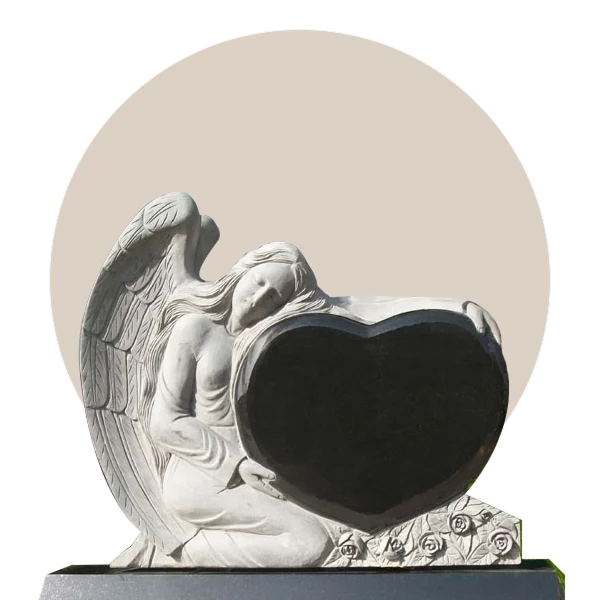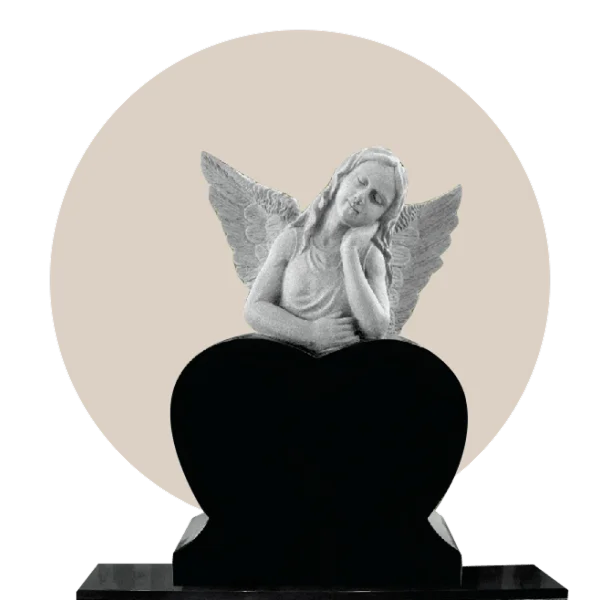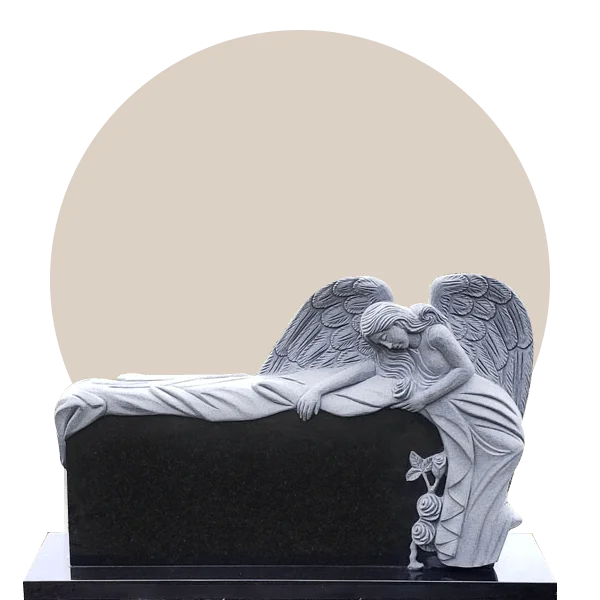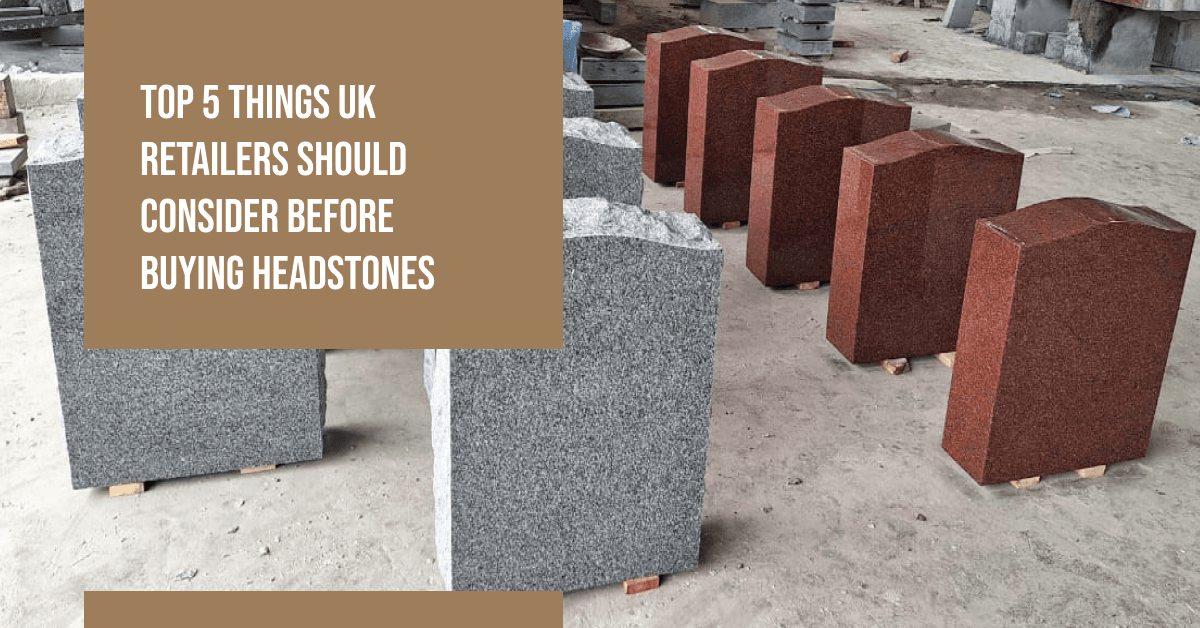When you walk through a cemetery, one of the most striking memorials you might notice is the angel gravestone, a figure of serene beauty, wings unfurled, sometimes weeping, often in prayer. But these angelic headstones aren’t just decorative: they carry deep spiritual and symbolic meaning.
In this post, we explore the history, symbolism, and different styles of angel headstones, including angel tombstones, weeping angel gravestones, kneeling angels, and more, helping you understand why they remain such a powerful choice for angel grave markers.
Why Angels on a Headstone? The Spiritual Meaning
Angels on memorials serve as more than just statues; they represent messengers, guardians, and spiritual guides. In many traditions, angels are seen as intermediaries between the earth and the divine. According to cemetery symbolism guides, angels are believed to watch over the deceased and guide their souls to the afterlife. At historic sites like Arnos Vale Cemetery, angels appear frequently, portrayed in various postures, each with its own meaning.
- Angels with wings spread upward often symbolize the soul's ascension to heaven.
- A weeping angel, by contrast, conveys grief and sorrow, particularly mourning a loss.
The History of Angel Headstones
The angel motif on memorials became especially popular in the Victorian era, a time when death and mourning rituals were deeply ritualised. Back then, angel headstones were often elaborate, with finely carved wings, halos, and sometimes tear-streaked faces.

One of the most famous influences is the Angel of Grief, a sculpture by William Wetmore Story (1894), showing an angel collapsed in grief with drooping wings and bowed head. This work has inspired countless weeping angel tombstone designs around the world.
Symbolism of Different Angel Poses
Different poses and styles of headstones with angels, angel statue gravestone, or angel tombstones designs each carry their own symbolic meaning. Here are some of the most common ones: Weeping / Crying Angels (weeping angel tombstone, weeping angel gravestone, weeping angel statue)
- These angels are typically shown with their heads buried in their arms or draped over a tombstone, sometimes kneeling.
- They are powerful symbols of grief, sorrow, and mourning, often used when death came too soon, especially in the case of tragic or untimely loss.
- The "Angel of Grief" sculpture, in particular, has become emblematic of this theme.
Kneeling Angels

- A kneeling angel may represent humility, devotion, or eternal prayer.
- When positioned over a grave, it often conveys that the angel is watching, protecting, or interceding for the departed soul.
Angels with Wings Raised or Open

- Open or raised wings are a classic representation of ascent, the soul being guided to heaven.
- It’s also a symbol of hope, resurrection, and spiritual elevation.
Guardian / Messenger Angels

- In many designs, angels are shown in calm, listening, or pointing poses, no dramatics, just presence.
- These angels embody divine protection, they watch over the departed and act as spiritual guardians.
- Historically, angels are among the most common grave markers to reflect faith, comfort, and connection with the spiritual realm.
Cultural & Religious Meanings of Angel Headstones
Angel symbolism isn’t limited to one religion; while deeply rooted in Christian iconography, it's broader in many contexts:
- In Christian tradition, angels are divine messengers. They play key roles in Biblical stories, such as Gabriel heralding Jesus’s birth.
- In other faiths or spiritual traditions, angel or angel-like beings may also represent guidance, protection, or spiritual transition.
- In secular or non-religious memorials, the image of an angel still resonates. Many people choose an angel gravestone simply as a symbol of peace, lasting love, or a belief that their loved one is watched over and safe.
Why Do People Choose an Angel Headstone?
Families pick angel tombstones for a few deeply personal reasons:

Comfort in Grief
The image of a gentle, protective angel gives solace. It’s as though a guardian is watching over the departed.
Symbol of Hope & Resurrection
Angels with raised wings or in flight often represent the soul’s ascension, reinforcing the belief in life after death.
Personalization
Many memorial artisans allow custom angel designs; angel tombstone designs can be tailored, from carved wing patterns to posture, to match a person’s personality or what they meant to their family.
Timeless Aesthetic
Angel figures remain a classic choice for memorials. Whether in granite, marble, or bronze, angel grave markers evoke elegance and reverence.
Materials & Design
If you're thinking about an angel headstone or angel statue gravestone, here are some practical factors to consider:
Material:
- Granite is very durable and common, even for sculpted angels.
- Marble allows for finely carved details, but weathers more easily.
- Bronze angels (often on a stone base) are also popular and age well with patina.
Maintenance:
- Statues with fine detail (feathers, draping robes) may require more cleaning.
- Bronze angels develop a patina, which many find beautiful, but may need occasional care.
Design Complexity:
- Simpler angel silhouettes (e.g., carved in relief on a headstone) cost less than fully sculpted angel statues.
- More elaborate weeping angel tombstones (with draping wings, expressive posture) are often more labor-intensive and therefore costlier.
Permissions & Regulations:
Some cemeteries/councils might have rules around the height or material of grave markers; always check local guidelines.
Famous Angel Statues and Their Influence
- The Angel of Grief, created by William Wetmore Story, remains one of the most replicated designs.
- The Haserot Angel is another poignant example, a bronze angel with "tears" that appear to drip, creating a haunting, emotional effect.
- At Arnos Vale Cemetery in the UK, angel sculptures serve not just as grave markers but as symbolic guides, representing different types of angelic presence and spirituality.
Conclusion
Choosing an angel headstone, angel tombstone, or angel gravestone is a deeply meaningful decision. These memorials carry profound symbolism, from grief and mourning (as expressed by weeping angels) to hope, protection, and spiritual guardianship (like kneeling or winged angels). They aren’t just stone figures; they’re powerful angel grave markers that speak to faith, memory, and reverence.
Whether you want a classic angel statue gravestone, a more subtle headstone with angels, or a custom angel tombstone design, the angel motif provides a timeless expression of love and eternal connection. If you’re considering one, think about the posture, material, and emotional message you want the angel to convey, and speak with a trusted memorial mason to bring that vision to life.




